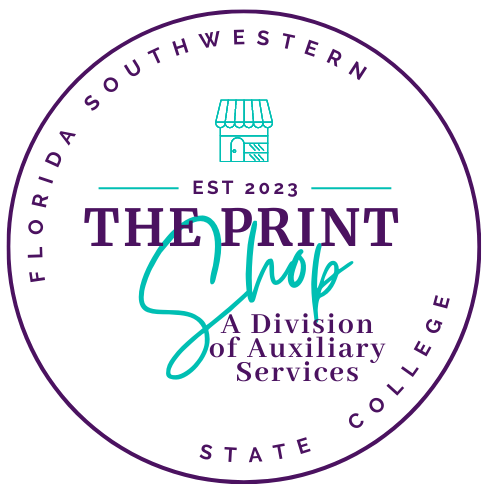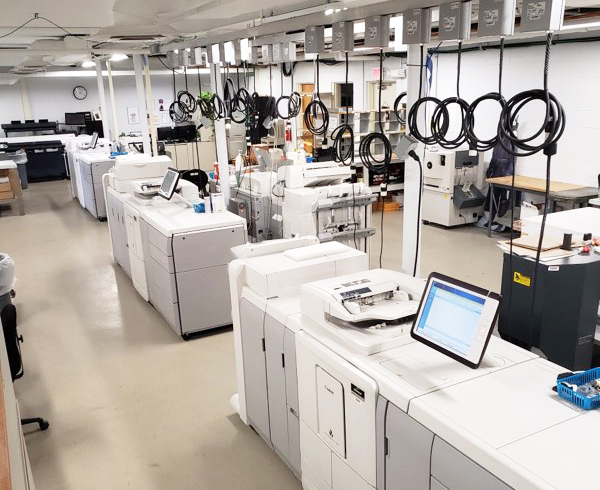Need Same-Day Printing? Find a Reliable Print Shop Near Me
Need Same-Day Printing? Find a Reliable Print Shop Near Me
Blog Article
The Ultimate Overview to Utilizing Printing Solutions for Personalized Art Prints
Steering via the globe of customized art prints calls for a clear understanding of various printing solutions. Artists have to think about variables such as printing methods and materials to attain the preferred result. Each decision, from art work preparation to color calibration, plays a necessary role in the end product. As they discover these elements, musicians can disclose the capacity for their job to link with target markets in a meaningful method. What actions can they take to assure their prints stand apart?
Recognizing Different Kinds Of Printing Providers
Several people might neglect the intricacies of printing services, comprehending the numerous types offered is essential for anybody looking to produce personalized art prints. One of the most usual types consist of digital printing, balance out printing, and display printing. Digital printing is preferred for its quick turn-around and ability to generate high-quality photos directly from electronic documents, making it optimal for tiny runs. On the other hand, offset printing offers exceptional picture top quality and is cost-effective for larger amounts, utilizing plates to move ink onto paper. Display printing, often utilized for fabrics and marketing items, entails pressing ink via a mesh display, permitting lively colors and textures. Each method has its unique benefits and constraints, making it crucial for musicians and designers to assess their specific demands, such as amount, preferred high quality, and budget, before selecting a printing service that aligns with their artistic vision.
Choosing the Right Products for Your Prints
Choosing the suitable materials is essential for achieving premium customized art prints. Understanding the numerous kinds of paper and the importance of ink top quality can greatly affect the result. Artists must take into consideration these elements to guarantee their vision is precisely represented in the printed item.
Paper Types Explained
Picking the ideal paper type is essential for attaining the preferred aesthetic and durability in customized art prints. Numerous options exist, each offering distinctive attributes. For example, shiny paper enhances shade vibrancy and detail, making it excellent for photography prints. Alternatively, matte paper supplies a softer coating, which is more suitable for artwork that needs subtlety and appearance. Fine art paper, usually made from cotton or alpha cellulose, uses historical high quality and appropriates for recreating complex information in paintings (Print Shop Near Me). Furthermore, specialized documents, such as watercolor or canvas, can include unique visual impacts. Inevitably, selecting the suitable paper kind will greatly influence the final presentation, making sure that the art work is both resilient and aesthetically enticing
Ink Top Quality Matters
Ink quality plays a necessary duty in the general success of custom-made art prints. High-quality inks guarantee dynamic colors, sharp details, and long life, which are important for showcasing creative job. When picking printing solutions, musicians need to consider pigment-based inks over dye-based alternatives, as they offer better fade resistance and color security. Additionally, the choice of ink should complement the selected paper type, enhancing the print's aesthetic influence. Ecological variables, such as humidity and temperature, can additionally influence ink efficiency; therefore, artists should inquire concerning ink solutions that stand up to these components. Inevitably, purchasing exceptional ink high quality can boost the final product, ensuring that the art print holds to the artist's vision for several years to find.
Checking Out Printing Techniques: Digital vs. Traditional
While both electronic and traditional printing strategies have their unique benefits, the decision on which method to use often pivots on the certain needs of the art work. Digital printing stands out in flexibility and speed, enabling quick turn-around times and the ability to publish on demand. This approach is especially beneficial for musicians who call for small runs or one-of-a-kind pieces, as it gets rid of the demand for substantial setup processes.Conversely, standard printing techniques, such as lithography and screen printing, often create richer textures and colors, interesting artists seeking an extra tactile and genuine finish. These techniques can enhance the deepness and quality of the art work, making them appropriate for larger editions. In addition, typical approaches might provide a distinct visual that electronic printing often battles to duplicate. Inevitably, the choice between these strategies must take into consideration factors like preferred top quality, amount, and artistic intent, guiding artists to the most appropriate alternative for their tasks.

Preparing Your Artwork for Printing
Successfully preparing artwork for printing needs cautious interest to information, despite the chosen printing technique. Musicians must ensure that their data are produced at the ideal resolution, typically 300 DPI, to maintain sharpness and clarity. The correct color mode, usually CMYK for print, is important to achieve the desired color accuracy. Musicians need to additionally take into consideration the measurements of the art work, making certain to consist of hemorrhage locations if needed, to avoid any kind of undesirable white sides after trimming.Additionally, data formats play an important role; TIFF and PDF are often preferred for premium prints. Prior to submission, it is essential to evaluate the artwork for any kind of blemishes or undesirable aspects. By carefully checking these aspects, musicians can improve the probability of their prints lining up with their creative vision, inevitably bring about an effective printing result.
The Value of Color Calibration and Proofing
Color calibration and proofing are important action in the printing process, as they guarantee that the last output properly shows the artist's vision. Correct color calibration warranties that the colors displayed on the display match those that will certainly be printed. This procedure includes adjusting the screen settings, printer accounts, and inks to attain a constant shade representation.Additionally, proofing enables artists to preview their job before the last print run. This phase enables them to discover and rectify any disparities in information, saturation, or color, therefore reducing pricey hop over to here errors. By utilizing hard-copy or electronic proofs, musicians can make informed choices about changes needed for perfect results.Incorporating shade calibration and proofing into the printing process not just boosts the quality of the last product yet likewise fosters a dependable collaboration between the musician and the printing solution, assuring fulfillment and fidelity to the original artwork.
Picking the Perfect Size and Style for Your Prints

Advertising and Marketing Your Customized Art Prints
Advertising and marketing and offering personalized art prints needs a solid brand identification to stand out in an open market. Effective on the internet promotion approaches and the critical use social media sites platforms can greatly enhance presence and interaction. By integrating these aspects, musicians can develop an engaging existence that brings in prospective buyers.
Structure Your Brand Identification
Establishing a solid brand identity is important for musicians wanting to effectively market and market their customized art prints. This identification incorporates the artist's distinct design, worths, and story, which resonate with possible buyers. Artists ought to produce a natural aesthetic visibility across all platforms, including logos, color design, and typography that mirror their imaginative vision. In addition, a clear goal declaration helps communicate the artist's function and interest. Involving narration concerning the inspiration behind each item can foster emotional links with the audience. Consistency in messaging, whether on social media sites or packaging, boosts acknowledgment and trust. By meticulously curating their brand name identification, artists can distinguish themselves in an open market, drawing in faithful clients who appreciate their artistry.
Reliable Online Promo Approaches
What approaches can musicians utilize to successfully promote their custom art publishes online? Initially, establishing an expert site showcasing the artwork is essential. This website needs to include comprehensive summaries and high-grade pictures to engage prospective buyers. In addition, artists can utilize e-mail advertising by constructing a customer checklist to share updates, promotions, and brand-new releases. Collaborating with blog writers and influencers in the art community can increase reach and reputation. Using limited-time discounts or unique pieces can also produce urgency, motivating acquisitions. Furthermore, maximizing material their explanation for search engines with relevant key words will certainly improve exposure. Ultimately, maintaining a blog site concerning the artistic process can bring in art enthusiasts, fostering a much deeper link with the target market and enhancing the general advertising and marketing strategy.
Making Use Of Social Network Operatings Systems
Social media site platforms function as powerful devices for artists wanting to market and offer their custom-made art prints. By leveraging systems like Instagram, Facebook, and Pinterest, musicians can display their job to a substantial target market. Involving visuals and strategic hashtags can increase visibility, drawing potential purchasers to their profiles. Frequently publishing web content, such as behind the curtain processes or new designs, aids keep target market passion and promotes a feeling of neighborhood. Furthermore, artists can use targeted marketing to reach certain demographics, improving the possibilities of sales. Partnerships with influencers or other musicians can additionally amplify exposure. Eventually, a well-curated social networks presence not only advertises personalized art prints yet likewise builds a loyal customer base over time.
Regularly Asked Inquiries

Just how Do I Discover Reputable Printing Company?
To locate trustworthy printing provider, one must investigate on-line evaluations, seek referrals from peers, compare profiles, request examples, and evaluate customer support responsiveness. This thorough strategy guarantees educated decisions and satisfactory results.
What Is the Typical Turn-around Time for Custom Prints?
The regular turnaround time for custom-made prints differs by company, yet typically varies from a couple of days to two weeks. Aspects affecting this consist of order size, intricacy, and the details printing techniques used.
Can I Obtain a Reimbursement if I'm Not Pleased With My Prints?
The inquiry of getting a refund for unsuitable prints usually depends on the details printing service's plans. Many business provide contentment warranties, while others may have stringent return conditions, highlighting the value of assessing terms ahead of time.
Are There Any Hidden Costs Connected With Printing Services?
Numerous printing services may include concealed prices such as arrangement charges, delivery costs, or visit site added fees for details products. It's crucial for consumers to ask about all possible costs prior to completing their order.
How Can I Ensure My Prints Are Environmentally Pleasant?
To assure prints are eco friendly, one ought to select environmentally friendly inks, recycled paper, and sustainable printing practices. Looking into printing solutions that prioritize sustainability and obtaining certifications can further ensure very little environmental impact in the printing procedure. Guiding through the globe of custom-made art prints needs a clear understanding of various printing services. Several individuals may overlook the details of printing solutions, understanding the numerous kinds available is essential for any person looking to produce custom art prints. The most usual types consist of digital printing, offset printing, and display printing. Successfully preparing art work for printing needs cautious interest to information, no matter of the picked printing technique. Prints aimed at galleries might require conventional sizes to promote framing, whereas special styles may appeal to enthusiasts looking for something distinctive.Lastly, the printing service's capacities should be evaluated.
Report this page